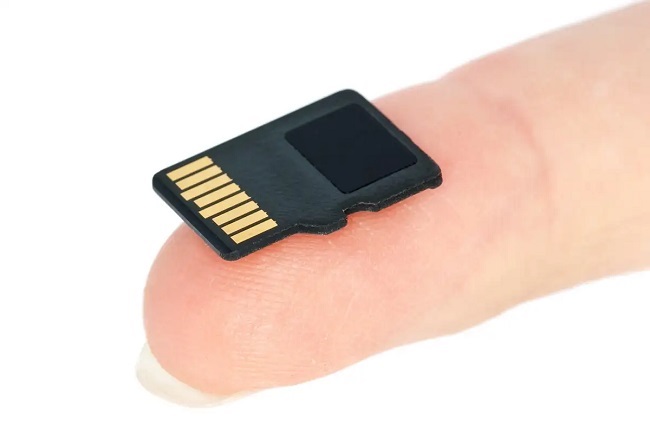With the digital world’s continuous expansion, storage devices like memory cards have become essential. Among these, TF cards and Micro SD cards are commonplace, though often misunderstood or conflated.
This article will demystify what a TF card is and delineate the differences between TransFlash (TF) cards and Micro SD cards.

What is a TF Card?
The term ‘TF Card’ stands for ‘TransFlash Card,’ introduced by SanDisk in 2004 as a semi-removable flash memory card designed for use in mobile devices.
The TF card, initially known as T-Flash and later renamed TransFlash, was extraordinarily small, boasting the size of a fingernail (15mm x 11mm x 1mm).
In the early stages, TF cards were primarily used in mobile phones but quickly became popular for other portable devices like GPS units, dash cams, drones, and action cameras.
The cards allowed for additional storage expansion, giving users flexibility in storing music, photos, videos, and other types of digital content.
What is Micro SD Card?
A Micro Secure Digital card, commonly known as a Micro SD card, is a type of removable flash memory card used for storing information.
It is a smaller version of the standard SD card and is commonly used in portable devices like smartphones, tablets, action cameras, and similar portable digital devices due to its compact size.
A Micro SD card measures only 15mm x 11mm x 1mm, making it one of the smallest memory cards available on the market. Despite its small size, it can store an impressive amount of data, depending on its specification type.
Micro SD Card: Variations
To further understand this topic, let’s delve into the different variations of Micro SD cards: Micro SD, Micro SDHC, and Micro SDXC.
Micro SD: This is the basic version, offering capacities up to 2GB.
Micro SDHC: ‘SDHC’ stands for Secure Digital High Capacity. These cards have capacities ranging from 4GB to 32GB.
Micro SDXC: ‘SDXC’ stands for Secure Digital eXtended Capacity. These cards offer a more extensive capacity range, from 64GB up to 2TB.
It’s important to note that, while these cards differ in storage capacities and file systems, they share the same physical dimensions.
Difference Between TransFlash and Micro SD Card
While TF and Micro SD cards might seem like two distinct types of memory cards, the reality is different. In fact, there’s hardly any difference between a TransFlash card and a Micro SD card.
In 2005, TransFlash was adopted by the SD Card Association and renamed Micro SD. Thus, the first Micro SD card was essentially a rebranded TransFlash card.
However, this rebranding also came with an upgrade, the SD-enabled feature, meaning the card could interface with Secure Digital (SD) slots via an adapter, which was not a functionality the original TF cards had.
That said, the two terms, “TF card” and “Micro SD card,” are used interchangeably today. The primary distinction lies in the historical context: ‘TF card’ is the old name, and ‘Micro SD card’ is the current one. Functionally and physically, they’re identical.
Conclusion
In conclusion, the terms ‘TF card’ and ‘Micro SD card’ generally refer to the same type of memory card, with the latter being a rebranded and slightly improved version of the former.
The differences essentially lie in historical changes and the added Secure Digital functionality brought by the rebranding. Understanding these distinctions helps consumers make more informed decisions about their digital storage needs.
Whether you choose to call it a TF card or a Micro SD card, this compact storage device plays an integral role in the digital world, catering to our ever-growing data storage needs in various portable devices. Happy data storing!


